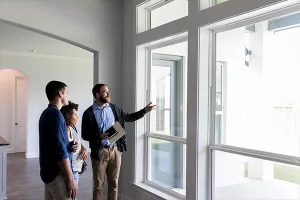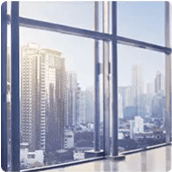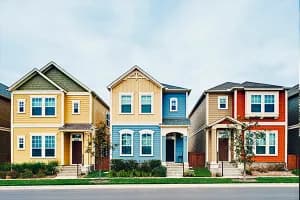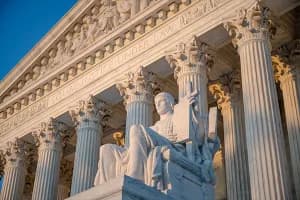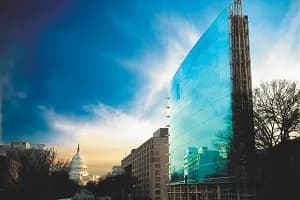After months of staying home, communities are witnessing an unprecedented demand from residents for places to walk, hike, relax and simply get out of the house.
Parks and trails, which help to improve both our physical and mental health, have provided some lucky residents with a place to escape during the pandemic.
However, not all residents have ready access to open spaces and communities need to think not only about the ways to create more outdoor spaces, but to also ensure they are safe and accessible to everyone.
Sidewalks, streets, plazas and parking lots are now assets that are waiting to be put to work in every neighborhood. And communities need to start thinking differently about public spaces in this “new normal”.
One novel idea is parklets, which repurpose parking spaces into places for a community to gather. Parklets are an easy, quick, and relatively inexpensive design solution to create more physical space in downtowns and in commercial districts. Parklets can include seating, tables, greenspace, play equipment – think mini golf course – and public art. They usually involve a partnership between a city and local businesses, residents, or neighborhood associations. The widespread introduction of parklets as a temporary social-distancing strategy has created the framework for these to take on a more permanent design and accommodate the unmet demand for more public space in a neighborhood.
In Commercial District Design: COVID-19 Response and Managementpdf, a brief produced in collaboration between Main Street America and AARP Livable Communities, the history and benefits of parklets, and pedlets, which provide an alternative path for pedestrians to move down the street, are explored. The brief includes how important these space-creation strategies can be as part of COVID-19 management efforts and outlines some benefits of parklets:
- Health
- Physically separated space from automobile traffic and other people
- Increased options for seating and places for rest
- Encouragement of walking, biking, and rolling
- Community Building
- Expanded opportunities for social gathering
- Sense of social cohesion and ownership of public space
- Opportunity to create hyper-local amenities that reflect local interest and culture
In addition to parklets, many cities, including San Francisco, Washington, DC, New York, and Seattle, are closing streets to traffic to increase the usable pedestrian space for residents. This is enabling more space to be created for cooped-up, pandemic-weary residents to safely exercise, walk and get outside.
The Open Streets Initiative in Long Beach, CA plans to close several roads to cars and open them up for walking and biking during specific hours. The idea is to encourage social distancing in the coronavirus era, as well as give businesses, such as restaurants, more space to take advantage of options such as outdoor dining.
Washington, D.C. has closed some streets to through traffic to make walking and biking safer including the Adams Morgan neighborhood where one of DC’s historic roadways was transformed into a temporary pedestrian and bicycle zone. And D.C. lawmakers are considering legislation to create a broader network of dedicated, protected lanes for commuting by bike given disruptions to transit caused by the virus.
Additionally, free programming traditionally held at community centers and libraries can now be conducted in neighborhood streets and parking lots. This could include physically distanced exercise programs, walking groups, story times, and even outdoor theater and small concerts.

Traditional downtown and neighborhood organizations can help deliver and manage safe programming in places where public space managers never delivered it before. Local artists and musicians can bring joy and entertainment, and volunteers can help with building, maintaining, educating visitors about physical distancing, and distributing masks.
In Norfolk, VA, Neighborhood Spots were designed and built by WPA Architecture, YARD & Company and Team Better Block to provide neighborhood services safely and outdoors. Neighborhood Ambassadors operate the space and the multi-use kiosk, which operates as a little free library, food pantry and more.

Other cities are coming up with new, and novel, approaches to keep people safe in public spaces. In Domino Park in NY large circles — spaced six feet apart — have been painted on the grass to encourage social distancing.
Other cities could encourage novel ideas like London-based designer Paul Cocksedge's Here Comes the Sun blanket, which allows people to "socialize safely and confidently" outdoors. The design comprises a looping section of material in the shape of an outline of a circle and four separate pieces of fabric cut into circles, which can be placed around the outline at six feet apart.
And now, more than ever, having ample open and public spaces available in a community is becoming an economic strategy. It’s always been “cool” to have a charming, vibrant downtown. Now it’s necessary.1 As the pandemic has shown, more and more people can work from anywhere and they will choose where they want to live -- in communities that offer the most amenities and places to go.
As reported in the AARP/Main Street America study referenced above, there are also economic benefits to developing parklets and pedlets:
- Expanded space for customer use, e.g. seating, sidewalk sales
- Increased foot and bike traffic and attraction of customers
- Opportunity for multi-business collaboration and shared revenue
As an example, to help struggling restaurants, a growing number of cities, like Tampa, Florida, Washington, DC and Cincinnati, Ohio, have opened road space to restaurants, as they reopen at a much reduced capacity.
The City of Cincinnati introduced a new Outdoor Street Dining pilot program to help local restaurants and bars responsibly and successfully reopen their businesses in light of recent health orders from the State of Ohio. Information gathered from this pilot may be used to inform future development of a longer-term program to address best practices for COVID-19 prevention.
And in Washington, DC, the temporary biking and pedestrian zones referenced above also allowed restaurants, bars, and shops to expand for outdoor service. The pedestrian zone was launched as a pilot program and may become a permanent fixture in the restaurant- and bar-heavy neighborhood.
Newark, DE also has similar plans to shut down a popular street so that restaurants can expand their seating across the sidewalk to the road. "I think that folks want to get out," said Ryan German, owner of Caffe Gelato. "It was important to us to have the opportunity to have people dine outside. With the extra space, with the city supporting it, we have a lot of really good options for people to dine out in Newark."
But too many communities still have regulations in place blocking these types of activities, and now is the time to rethink those regulations—and fast. Local regulations prohibiting uses outside should be, and needs to be, lifted. Public spaces, controlled for adherence to CDC guidelines and the latest research, should become the setting for every reasonable type of use to allow communities to reopen.

There is plenty of opportunity. It’s now time to pinpoint public space, unused land and private property that can be set aside for public use. It's now time for all cities and towns across America to put together a plan to respond to the “new normal”.
1 Why Now Is the Time to Get Intentional about Placemaking (Strongtowns.org, May 8, 2020)
